(English version below)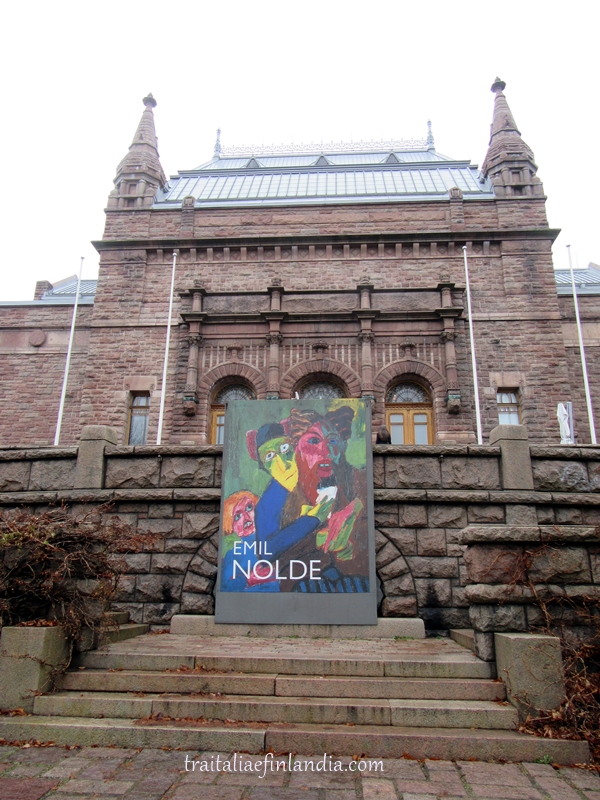
A Turku, precisamente nel Turku Art Museum, fino al 5 gennaio prossimo e’ aperta una mostra interessante sul pittore espressionista tedesco-danese Emil Nolde. Nolde nasce nel 1867 e durante la vita la sua arte ha avuto fasi alterne: dapprima influenzato dal post-impressionismo, poi membro del gruppo Die Brücke e’ stato uno dei primi espressionisti. In seguito, fu dichiarato “artista degenerato” dal regime nazista e infine e’ diventato quell’icona rappresentativa del modernismo che e’ adesso.
Il suo stile si distingue per i colori vivaci e le pennellate ricche: ebbe fama di esploratore del colore. Non solo i quadri a olio ma anche i suoi acquerelli hanno caratteristiche di luminosita’ e vividezza molto accentuate.
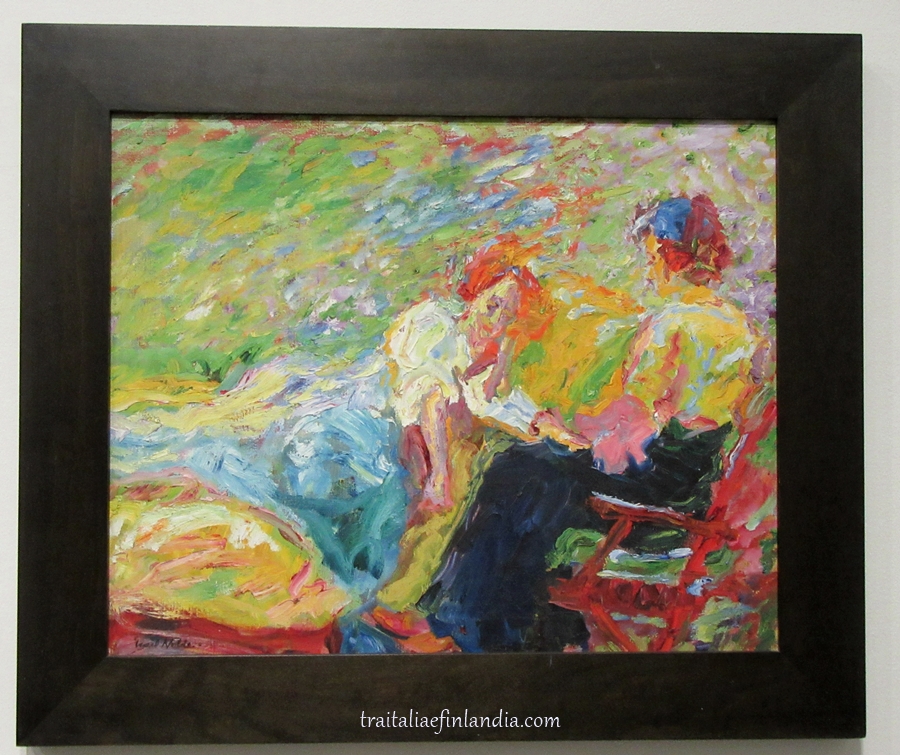

-1- Nel primo periodo Nolde e’ molto vicino alle tematiche dell’Impressionismo: i quadri qui sopra ci parlano di conversazioni in giardino e vita all’aria aperta. Sono del primo decennio del ‘900.
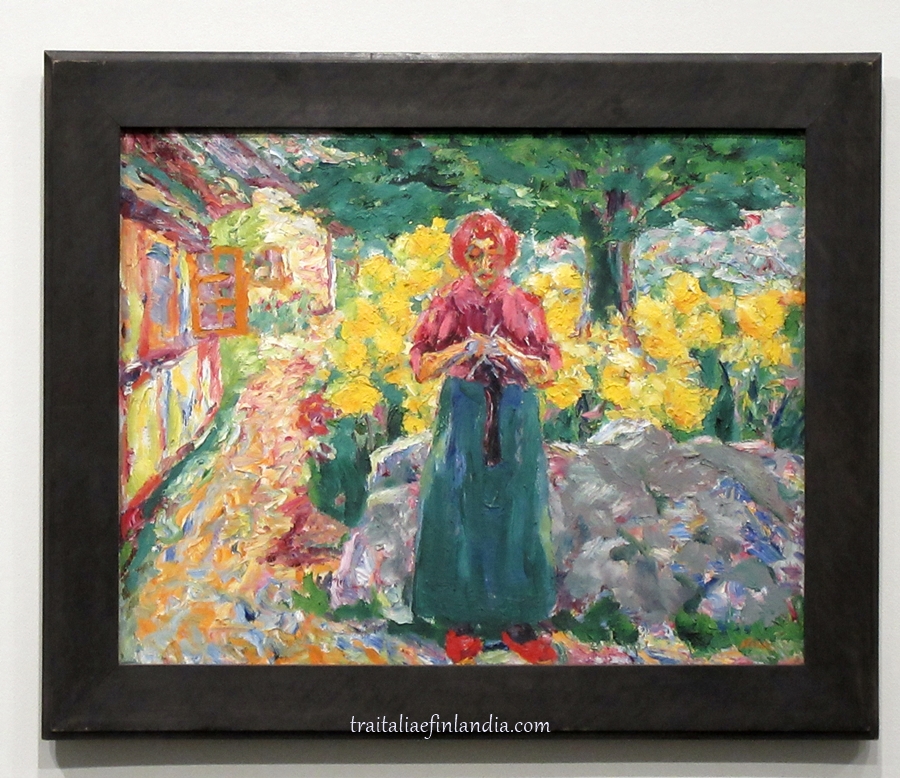
-2- A me sono piaciuti anche i quadri dedicati all’osservazione del cielo, come questi due: “Paesaggio con giovani cavalli” e sotto: “Raggiante cielo della sera”. Queste nuvole grigie non vi sembrano la raffigurazione di una sorta di “mano del destino”?
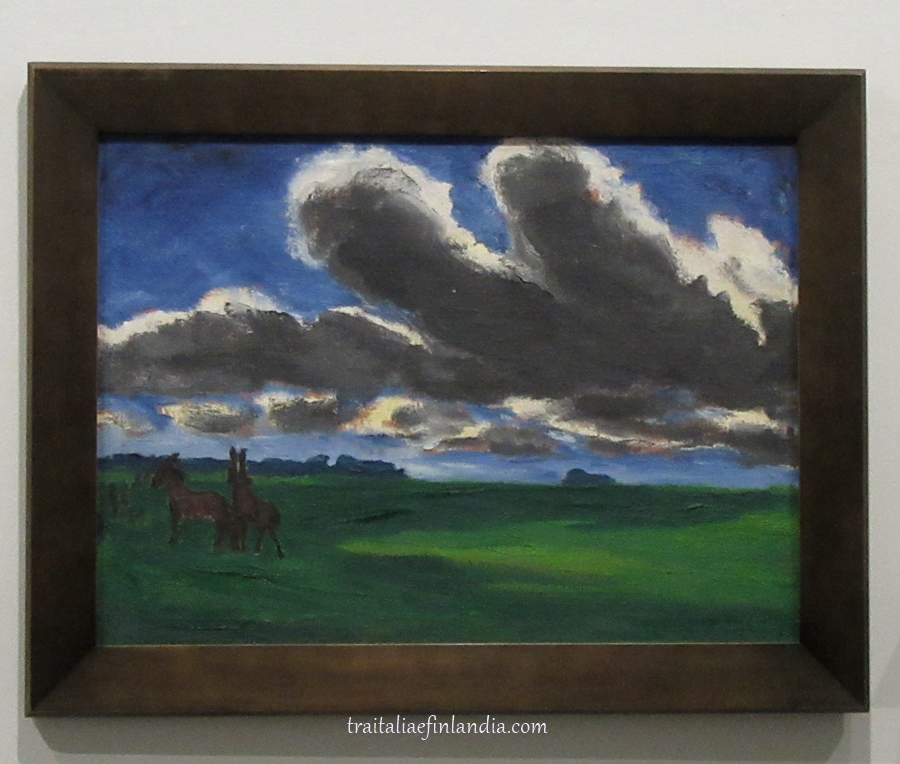
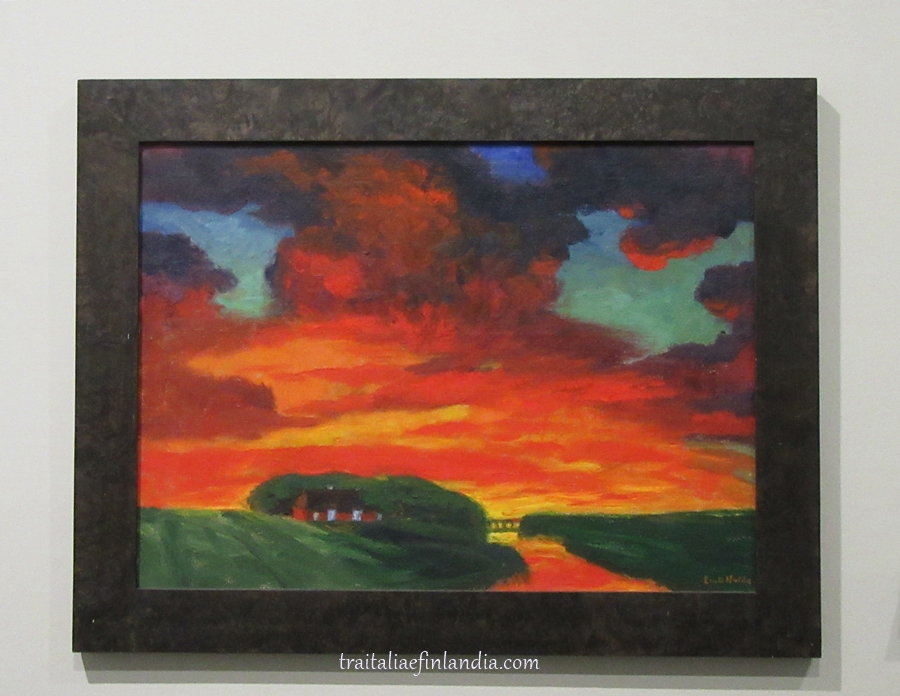
-3- Nolde e’ molto radicato nella cultura della sua terra e ritrae spesso scene di vita quotidiana come si svolge nei paesini sulla costa del Mare del Nord; il mare e’ molto presente e viene dipinto spesso come impetuoso e spumeggiante con chiari richiami romantici. Dopotutto Espressionismo e Romanticismo hanno molto in comune.
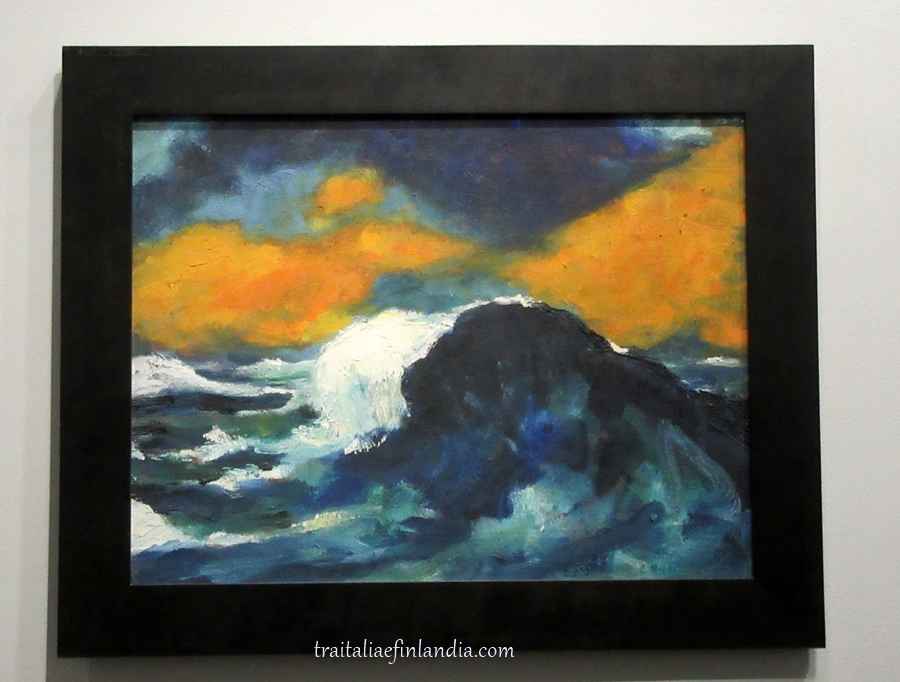
-4- Anche Nolde, come qualche altro impressionista e come tanti artisti del primo novecento, ha subito il fascino delle terre lontane. Nel 1913-14 lui e la moglie Ada si sono imbarcati a seguito di una spedizione nella Nuova Guinea tedesca, a nord dell’Australia. I quadri ispirati a questa esperienza sono assai apprezzabili per la vibrante scelta dei colori e per i soggetti: mari con alte onde che si frangono sulla costa, palme che ondeggiano nel vento ed esseri umani che sembrano vivere in tutt’uno con la natura circostante; rendono l’idea romantica del vivere felice sotto un sole permanente in una specie di paradiso.


Questo quadro si intitola semplicemente: “Primi esseri umani”, 1922.
-5- Se devo scegliere la sezione della mostra che ho gradito maggiormente, diro’ l’ultima parte, dedicata alle pitture ed acquerelli con soggetto floreale. Nolde traeva molta ispirazione dai fiori e, specialmente negli acquerelli dell’ultimo periodo, gli piaceva dipingere le variazioni di colore che avvenivano in giardino nel corso delle stagioni. Come Monet, anche Nolde viveva in una casa con un ampio giardino colmo di fiori, la quale esiste ancora ed e’ pure aperta al pubblico.

“Calendule e Dalie bianche”, 1951.

Uno dei miei preferiti: “Grandi Papaveri”, 1942.

“Giardino fiorito”, 1922.
Un importante post scriptum alla fine della mostra specifica che: “Nonostante Nolde fosse seguace del nazismo ed antisemita, nondimeno sul piano artistico e’ stato un importante rappresentante del modernismo europeo”.
Nolde in Turku.
In Turku, in the outstanding Turku Art Museum, an interesting art exibition is going on about Emil Nolde, a German-Danish expressionist painter. Born in !867, Nolde was alternatively in his life: a post-impressionist; a member of the Die Brücke group and one of the first expressionists; a degenerated artist in the Nazi period. Finally he is nowadays an acknowledged icon of early modernism.
Intense and clear colour strokes mark his personal style: he was defined an explorer of colours. Not only his oil paintings but also his watercolour compositions boast vividness, depth and contrasting colours.
-1 – His earliest works in early 1900’s are clearly influenced by the themes of Impressionism: gardens, outdoor life, sunshine and light. (As in the three first shots above).
-2 – Personally, I liked paintings depicting the sky, as in the next two shots: “Landscape with Young Horses” and “Glowing Evening Sky”; doesn’t the dark grey cloud look like a kind of big hand of destiny?
-3 – Nolde is firmly rooted in his native land and often portrays the small villages and the rural life of the coastal area along the North Sea. In his works the sea often appears as dark, rough and wavy, recalling the impetus of Romanticism: after all, Romanticism and Expressionism have much in common.
-4 – As well as many painters and artists in the early 1900’s, Nolde felt the fascination of faraway places. In 1913-14 he and his first wife Ada joined an expedition to German New Guinea, north of the Australian coast. He produced several works after this experience; he intended to portray the vibrant exuberance of local landscapes with vivid colours, swaying palms and high sea waves, conveying the romantic idea of happy places and happy people living in everlasting sunshine, a kind of paradise on earth. The title of the painting is just: “First Human Beings”.
-5 – If I can say what section of the exibition I liked best, I will mention the last one, dedicated to oil and watercolours with flowery subjects. Nolde was greatly inspired by flowers and liked to paint the variations in colours which happened in his garden through the seasons . His production on the subject is particularly abundant. Like Monet, he lived in a house with a large garden, which still exists and is open to the public. The last three paintings: “Calendulas and White Dahlias” 1951; “Large Poppies” 1941; “Flower Garden” 1922.
At the end of the exibition, an important Post Scriptum clarifies the following: “Even though Nolde was a staunch adherent to National Socialism and anti-Semite, this in no way detracts from his significance as one of the spearheading figures of early modernist art”.
****
.
Linked to: Tom’s Tuesday Meme. Makrotex Challenge. My Corner of the World. All Seasons.

Magnificas estas pinturas, gosto muito deste estilo.
Um abraço e boa semana.
Andarilhar
Dedais de Francisco e Idalisa
O prazer dos livros
"Mi piace"Piace a 1 persona
Thank you very much. Have a nice continuation of week you too!
"Mi piace""Mi piace"